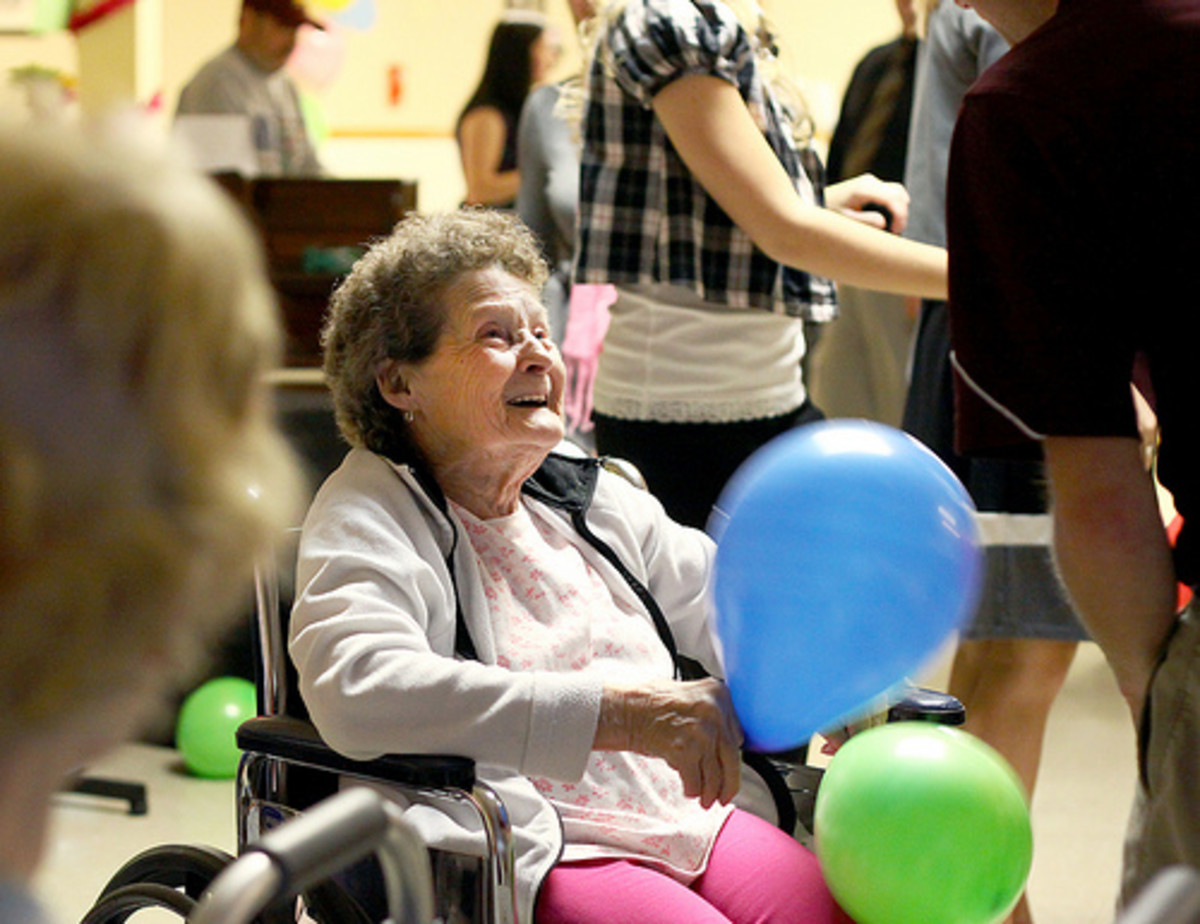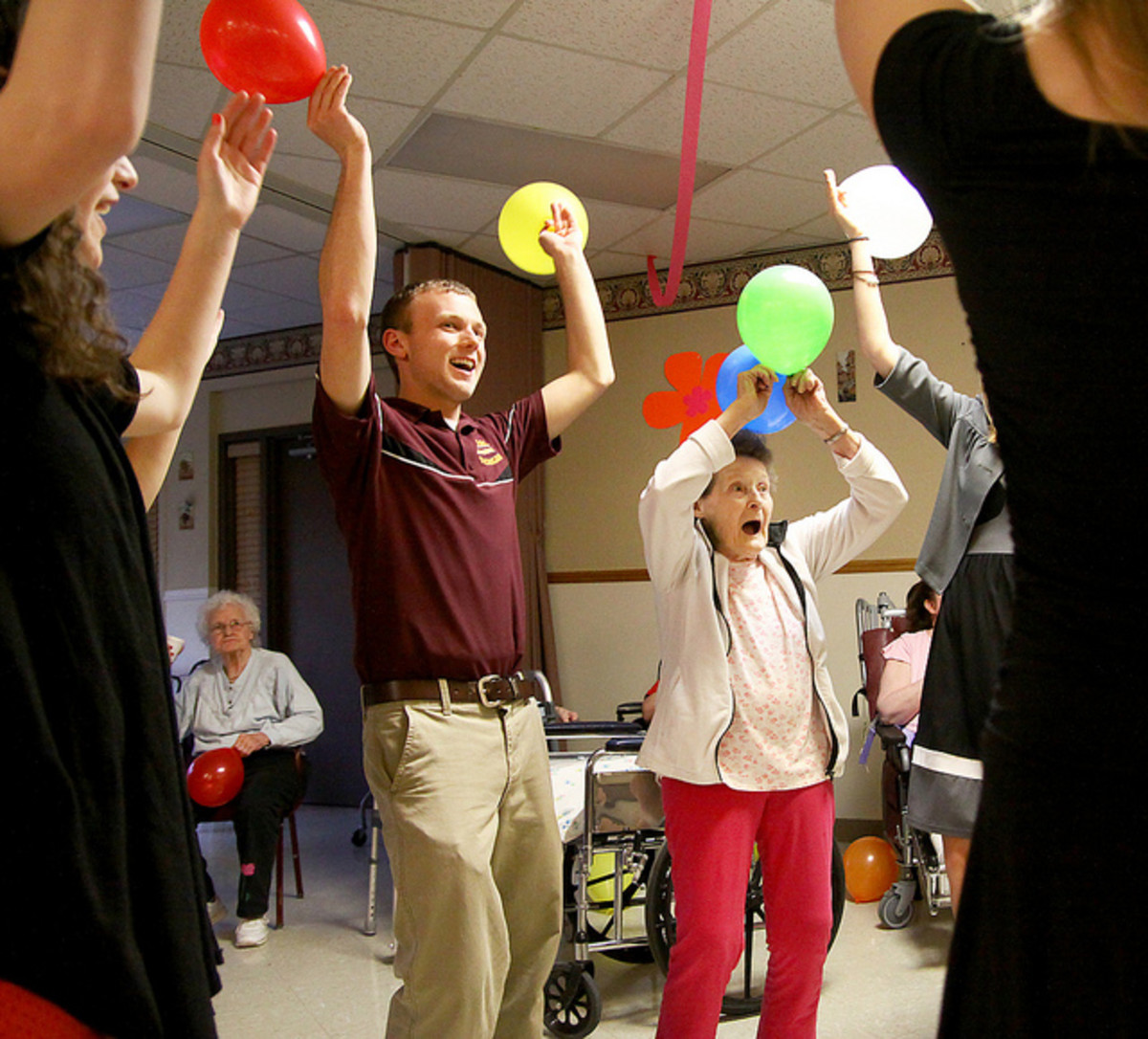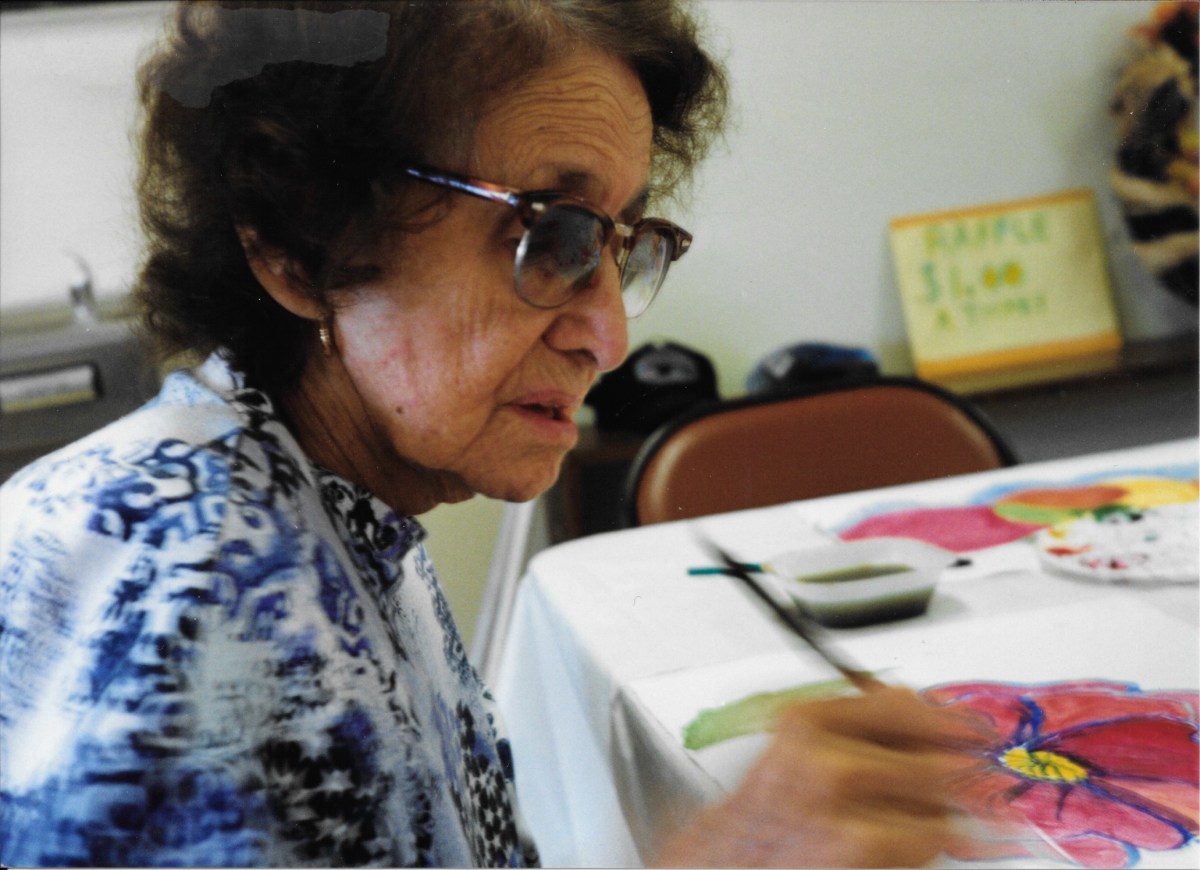Transitioning from Independent Living to a Nursing Home: A Nurse's Advice
The move from independent living to a nursing home can be a distressing and disorienting experience for an elderly person, and can elicit feelings of sadness and guilt in family members. As a Registered Nurse specializing in geriatrics, I have seen hundreds of families work through that transition. This article will offer some suggestions in order to make that difficult transitional period easier.
Become Familiar with Facility Policies and Routines
Upon admission you will most likely meet with a representative from the social services department who will give you an overview of the facility policies. Because the admission process can be overwhelming I have listed a few questions you may want to ask:
- When are visiting hours? Many facilities have guidelines about visiting hours, but I have yet to see a nursing home that actually enforces them. As long as you don’t plan on visiting at midnight, deviating from the posted hours should not be an issue. I would encourage you to visit on both the day and evening shifts, if possible. This gives you the opportunity to meet the caregivers on both shifts and to become familiar with how the routine varies throughout the day.
- When are meal times? Plan to visit your family member during a meal once in a while. It can provide them with comfort and familiarity, and allow you to see how the mealtime routine works. Many facilities allow visitors to purchase meals; this can afford you the chance to spend some time with your loved one as well as monitor the quality of the food being served. Ask about the policy for bringing in snack items for your loved one, and whether there is a place to store items that need to be refrigerated or frozen.
- Can I take my family member out for the day? What about an overnight visit? A nursing home is not a jail! Unless medically contraindicated, you should be able to take your loved one out for the day, or even for an overnight visit. Going out for dinner or shopping at the mall can really lift a person’s spirits.
- What about cable TV or phone service? These “extras” may not be included in the cost of the room, but can be purchased by family members. Keep in mind that there are televisions in the “living room” areas and that residents can use the telephone at the nurse’s stations to make and receive phone calls in most facilities.
- How are medications ordered? Most facilities have a contract with a pharmacy that delivers medications on a daily basis. This can be convenient for family members because they do not need to worry about picking up prescriptions and bringing them to the nursing home. However--and this is a BIG “however”--if medications are not covered by insurance they will be much more expensive through the facility pharmacy than if you get the prescription filled at your local pharmacy. Ask whether you have the option for filling your family member’s prescriptions yourself, and then decide what would work best for you.
Add Personal Touches
Because nursing home accommodations traditionally resemble hospital rooms, adding items from home can make a big difference. A plant, vase of flowers, and pictures of loved ones can be comforting. A small lamp placed on the nightstand next to the bed provides a warmer light than the glaring over-bed florescent light fixture. A small TV or radio can help your family member feel more connected to the outside world, and an inexpensive CD or mp3 player loaded with their favorite music may enhance relaxation. Ask the admissions or social service department whether larger items such as a favorite chair or chest of drawers can be brought in.
Although the nursing home will provide sheets and blankets, many people prefer to bring their own linen from home. Even adding a favorite quilt or comforter can make the room seem more welcoming. Consider bringing nightgowns and a robe as well since they are much cozier than the gowns provided by nursing homes. Slippers or socks with non-skid soles are also nice to have. I strongly recommend that all personal items be labeled with indelible ink before they are brought in. Having a sock go missing is one thing; losing track of a favorite quilt simply because it wasn’t labeled can be heartbreaking!
Does your family member like to knit? Read? Do crossword puzzles? Bringing in items for activities the person enjoys helps to enhance self-esteem and mental wellbeing. If your family member is used to reading the newspaper every morning, arrange for delivery to the nursing home!
As a nurse, I always encourage family members to bring in and display a few photos of their loved one in younger years. I have found that it helps the staff to remember that the person for whom they are caring lived a full and rewarding life prior to their admission at the nursing home. I have heard aides say, “I didn’t know Mr. Smith won the Medal of Honor!” and “Mrs. Jones was a really good artist.” Personal touches help the elders to feel more grounded, and help the staff to recognize their uniqueness.

Develop a Good Relationship with Caregivers
Placing the responsibility for the wellbeing of someone you love in the hands of a stranger is a terrifying prospect for most people. The stress of the transition--the “Am I doing the right thing?”--can lead to friction and worry. As with other relationships, trust develops over time.
Make an effort to get to know the nurses who will be working with your loved one, because they may become important people in your life. As a nurse in long-term care, there are family members I have known for more than five years. I was there on the day their loved one was admitted, and I was there on the day their loved one died. Developing a positive relationship with your loved one’s primary nurses can make the experience smoother all around.
Equally important--get to know the aides who will be providing the hands-on care. Aides in nursing homes have a difficult, physically demanding job for which they receive very little recognition. They are largely responsible for the quality of care that your loved one will receive; developing a good relationship with them is crucial. A simple “thank you” lets them know that you see and appreciate the work that they are doing. An occasional plate of home-baked cookies left at the nurses’ station doesn’t hurt, either!
Let the staff know your concerns; let them know the habits and preferences of your family member. Do they prefer to shower in the morning or evening? Do they like to stay up late and watch TV, or go to bed exactly at eight? Eat a big breakfast or sleep til noon? The more information you can provide to the staff, the easier the transition will be.
The move from independent living to a nursing home is never easy, but you are not alone. People who work in nursing homes are aware of the issues and feelings you are going through. Take advantage of their experience and resources in order to make the transition as smooth as possible.









